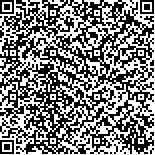| 引用本文: | 张彬,杨晨,蔡媛,谭群英,镇兰萍,蒋超,李跃辉.眼镜蛇药材质量标准提升研究[J].中国现代应用药学,2023,40(8):1050-1056. |
| ZHANG Bin,YANG Chen,CAI Yuan,TAN Qunying,ZHEN Lanping,JIANG Chao,LI Yuehui.Research on the Improvement of Quality Standards of Cobra Medicinal Materials[J].Chin J Mod Appl Pharm(中国现代应用药学),2023,40(8):1050-1056. |
|
| |
|
|
| 本文已被:浏览 1365次 下载 735次 |

码上扫一扫! |
|
|
| 眼镜蛇药材质量标准提升研究 |
|
张彬1,2, 杨晨1,2, 蔡媛2, 谭群英3, 镇兰萍2, 蒋超4, 李跃辉1,2
|
|
1.湖南中医药大学, 长沙 410000;2.湖南省中医药研究院中药研究所, 长沙 410000;3.湖南永州异蛇生物制药有限公司, 湖南 永州 425000;4.中国中医科学院中药资源中心, 道地药材国家重点实验室培育基地, 北京 100700
|
|
| 摘要: |
| 目的 通过研究眼镜蛇性状、鉴别、检查等项目,建立眼镜蛇特异性鉴别方法,完善眼镜蛇药材地方标准,探讨其列入行业、地方或国家标准的可能性。方法 收集眼镜蛇、蕲蛇、乌梢蛇、金钱白花蛇等共3科6属8种23条蛇类,对眼镜蛇进行外观性状和显微鉴别研究;通过比对GenBank数据库中收集蛇类的线粒体COI基因序列,设计眼镜蛇特异性引物,提取DNA进行PCR扩增及电泳检测,并对其特异性和适用性进行了考察与验证;测定了眼镜蛇水分、灰分、浸出物等检查项目,完善眼镜蛇质量标准。结果 眼镜蛇外观性状鉴别要点为“颈背部具眼镜状白色斑纹”“腹前段有1个黑褐色横斑,横斑前有1对黑色斑点”等,显微特征有角质鳞片、表皮、横纹肌、骨陷窝、骨小管等;眼镜蛇特异性引物YJS203-F/YJS303-R能够准确鉴别出眼镜蛇及其他蛇类;16批眼镜蛇样品的水分、灰分、酸不溶性灰分、水溶性浸出物、醇溶性浸出物的平均值分别为5.71%,21.10%,0.16%,20.32%,13.16%。结论 COI基因序列能够对眼镜蛇进行特异性鉴别,该方法快捷高效、结果准确;在原有地方标准的基础上,完善了眼镜蛇药材的质量标准,为眼镜蛇药材质量评价体系的制定和完善提供科学依据。 |
| 关键词: 眼镜蛇 聚合酶链式反应 DNA分子鉴定 质量标准提升 市场监管 |
| DOI:10.13748/j.cnki.issn1007-7693.20220958 |
| 分类号:R284.1 |
| 基金项目:湖南省自然基金科药联合项目(2021JJ80045,2021JJ80030);中央林业改革发展资金野生动植物保护项目(湘财资环指[2021]47号) |
|
| Research on the Improvement of Quality Standards of Cobra Medicinal Materials |
|
ZHANG Bin1,2, YANG Chen1,2, CAI Yuan2, TAN Qunying3, ZHEN Lanping2, JIANG Chao4, LI Yuehui1,2
|
|
1.Hunan University of Traditional Chinese Medicine, Changsha 410000, China;2.Institute of Chinese Materia Medica, Hunan Academy of Traditional Chinese Medicine, Changsha 410000, China;3.Hunan Yongzhou Yishe Biopharmaceutical Co., Ltd., Yongzhou 425000, China;4.National Resource Center for Chinese Materia Medica, China Academy of Chinese Medical Sciences, State Key Laboratory of Dao-di Herbs, Beijing 100700, China
|
| Abstract: |
| OBJECTIVE To establish Cobra specific identification method, improve the local standard of Cobra medicinal materials, explore the possibility of this standard bring into the company, provincial or national standard by studying the traits, identification, inspection and other quality standard-related items of Cobra. METHODS A total of 23 samples belonging to 8 species 6 genera 3 families were collected, including Naja naja, Agkistrodon acutus, Zaocys dhumnades, Bungarus multicinctus, etc. The appearance characteristics and microscopic structure of Cobras were studied. To design the Cobra-specific primers, the mitochondrial COI gene sequences of snakes collected from GenBank database were compared. The collected snakes were for DNA extraction and polymerase chain reaction amplification and detection by electrophoresis. The specific identification method of Cobra was established, and its specificity and applicability were investigated and verified. The quality standard of Cobra was improved by measured the inspection items such as moisture, ash and leaching. RESULTS The key points for identifying the appearance of Cobra were “spectacle-like white markings on the back of the neck” “one dark-brown horizontal spot on the front of the abdomen, a pair of black spots in front of the horizontal spot”, etc. Microscopic features included horny scales, epidermis, striated muscle, bony lacuna and bony tubules, etc. Cobra-specific primers YJS203-F/YJS303-R could accurately identify Cobra and other snakes. The average values of moisture, ash, acid-insoluble ash, water-soluble extract and alcohol-soluble extract of 16 batches of Cobra samples were 5.71%, 21.10%, 0.16%, 20.32% and 13.16%, respectively. CONCLUSION The COI gene sequence can specifically identify Cobra. The method is fast and efficient with accurate results. On the basis of the original local standards, the quality standard of Cobra medicinal materials is improved to provide a scientific basis for the formulation and improvement of the quality evaluation system of cobra medicinal materials. |
| Key words: Cobra polymerase chain reaction DNA molecular identification improvement of quality standards market supervision |
|
|
|
|
